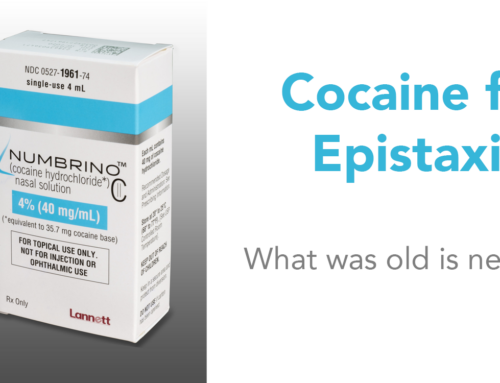 Intravenous beta blockers and non-dihydropyridine calcium channel blockers are recommended first-line for atrial fibrillation (AF) with rapid ventricular rate (RVR) [1]. In a previous post, Bryan Hayes (@PharmERToxGuy) provided an overview of the data comparing beta blockers to calcium channel blockers for atrial fibrillation rate control in the ED. Here is part 2 of our two-part AF series.
Intravenous beta blockers and non-dihydropyridine calcium channel blockers are recommended first-line for atrial fibrillation (AF) with rapid ventricular rate (RVR) [1]. In a previous post, Bryan Hayes (@PharmERToxGuy) provided an overview of the data comparing beta blockers to calcium channel blockers for atrial fibrillation rate control in the ED. Here is part 2 of our two-part AF series.
Thinking Beyond the Emergency Department
Although clinicians are cautioned regarding their use in heart failure or hypotension, minimal guidance is provided on which of the two classes is most appropriate in an individual patient. While acute rate control is certainly an important therapeutic goal for patients in AF with RVR, consideration of the patient’s comorbid conditions may be just as important for determining which drug class represents a more viable long-term solution. As a consequence, judicious selection of initial therapy may therefore avoid unnecessarily prolonging a patient’s hospitalization while therapy is transitioned. The following are several common comorbidities of AF where one agent may be more ideal over another:
1. Heart failure
Both beta blockers and non-dihydropyridine calcium channel blockers exert negative inotropic effects in the acute setting and should therefore be used with caution in patients with heart failure with reduced ejection fraction (HFrEF). However, long-term beta blocker use confers significant improvements in survival whereas non-dihydropyridine calcium channel blockers either exert no beneficial effects or may even worsen outcomes [2-4]. For these reasons, the use of non-dihydropyridine calcium channel blockers should generally be avoided in patients with HFrEF despite minimal differences in their acute risks [5].
2. Ischemic heart disease
Although both classes are associated with improvements in major adverse cardiovascular events in patients with a history of myocardial infarction (MI), only beta blockers have been associated with reductions in the incidence of ventricular arrhythmias and sudden cardiac death [3, 4, 6]. Notably the benefits of beta blockers in the post-MI setting appear to attenuate over time, though they remain a standard of care and should be favored over non-dihydropyridine calcium channel blockers. The latter remain an option in patients with chronic stable angina or those whose symptoms are refractory to maximally-tolerated doses of beta blockers.
3. Hypertension
Along with angiotensin-converting enzyme inhibitors (ACEi), angiotensin II receptor blockers (ARB), and thiazide diuretics, calcium channel blockers are recommended as a first-line option for patients with high blood pressure [7]. Their use as initial therapy is especially advocated in black patients (although thiazides are a viable alternative), given improvements in long-term cardiovascular events compared to inhibitors of the renin-angiotensin-aldosterone system [8]. Beta blockers should be reserved for patients whose blood pressure remains uncontrolled despite use of the four preferred drug classes (ACEi or ARB, thiazide, or calcium channel blocker) given evidence from trials that they are less effective at preventing cardiovascular events [7]. Therefore, in patients with concomitant high blood pressure who may benefit from additional blood pressure lowering, calcium channel blockers may be a more ideal option for rate control. The addition of a nondihydropyridine calcium channel blocker should generally be avoided in patients who are already receiving a dihydropyridine calcium channel blocker (e.g., amlodipine, nifedipine), as only a minimal incremental impact on blood pressure is observed.
4. Pulmonary disease
Calcium channel blockers should be favored over beta blockers in patients with asthma (or other forms of pulmonary disease with a bronchospastic component) given the risk of exacerbating bronchospasm. However, beta blockers need not be avoided in patients with chronic obstructive pulmonary disease (COPD) given lack of evidence to indicate harm and a potential benefit [9, 10].
5. Others
Clinicians may be cautioned against using beta blockers in a number of other disease states, including diabetes mellitus, peripheral vascular disease, depression, and erectile dysfunction. However, in each case minimal evidence supports the risk of exacerbating disease and in most cases the benefits of therapy outweigh risks. That being said, a calcium channel blocker would be an acceptable choice in any of these conditions in the absence of compelling indications for beta blocker therapy.
Bottom line
Both beta blockers and calcium channel blockers appear safe and effective for acute rate control in AF with RVR. However, given the compelling benefits of one class over the other in several common comorbidities, initial selection should take these factors into consideration so that the medication chosen can represent both a short- and long-term solution.
References
- Anderson JL, Halperin JL, Albert NM, Bozkurt B, Brindis RG, Curtis LH, et al. Management of Patients With Atrial Fibrillation (Compilation of 2006 ACCF/AHA/ESC and 2011 ACCF/AHA/HRS Recommendations) A Report of the American College of Cardiology/American Heart Association Task Force on Practice Guidelines. Circulation. 2013 May 7;127(18):1916–26. Pubmed
- Effect of metoprolol CR/XL in chronic heart failure: Metoprolol CR/XL Randomised Intervention Trial in Congestive Heart Failure (MERIT-HF). Lancet. 1999 Jun 12;353(9169):2001-7. Pubmed
- Effect of verapamil on mortality and major events after acute myocardial infarction (the Danish Verapamil Infarction Trial II–DAVIT II). Am J Cardiol. 1990 Oct 1;66(10):779-85. Pubmed
- The Multicenter Diltiazem Postinfarction Trial Research Group. The effect of diltiazem on mortality and reinfarction after myocardial infarction. N Engl J Med. 1988 Aug 18;319(7):385-92. Pubmed
- Yancy CW, Jessup M, Bozkurt B, Butler J, Casey DE Jr, Drazner MH, et al; American College of Cardiology Foundation; American Heart Association Task Force on Practice Guidelines. 2013 ACCF/AHA guideline for the management of heart failure: a report of the American College of Cardiology Foundation/American Heart Association Task Force on Practice Guidelines. J Am Coll Cardiol. 2013 Oct 15;62(16):e147-239. doi: 10.1016/j.jacc.2013.05.019. Pubmed
- Turi ZG,Braunwald E.The use of beta-blockers after myocardial infarction. JAMA.1983 May 13;249(18):2512-6. Pubmed
- James PA, Oparil S, Carter BL, Cushman WC, Dennison-Himmelfarb C, Handler J, et al. 2014 evidence-based guideline for the management of high blood pressure in adults: report from the panel members appointed to the Eighth Joint National Committee (JNC 8). JAMA J Am Med Assoc. 2014 Feb 5;311(5):507–20. Pubmed
- Leenen FHH, Nwachuku CE, Black HR, Cushman WC, Davis BR, Simpson LM, et al. Clinical events in high-risk hypertensive patients randomly assigned to calcium channel blocker versus angiotensin-converting enzyme inhibitor in the antihypertensive and lipid-lowering treatment to prevent heart attack trial. Hypertension. 2006 Sep;48(3):374–84. Pubmed
- Short PM, Lipworth SI, Elder DH, Schembri S, Lipworth BJ. Effect of beta blockers in treatment of chronic obstructive pulmonary disease: a retrospective cohort study. BMJ. 2011 May 10;342:d2549. Pubmed
- Rutten FH, Zuithoff NP, Hak E, Grobbee DE, Hoes AW. Beta-blockers may reduce mortality and risk of exacerbations in patients with chronic obstructive pulmonary disease. Arch Intern Med. 2010 May 24;170(10):880-7. Pubmed
Edited by Bryan D. Hayes, PharmD, FAACT




